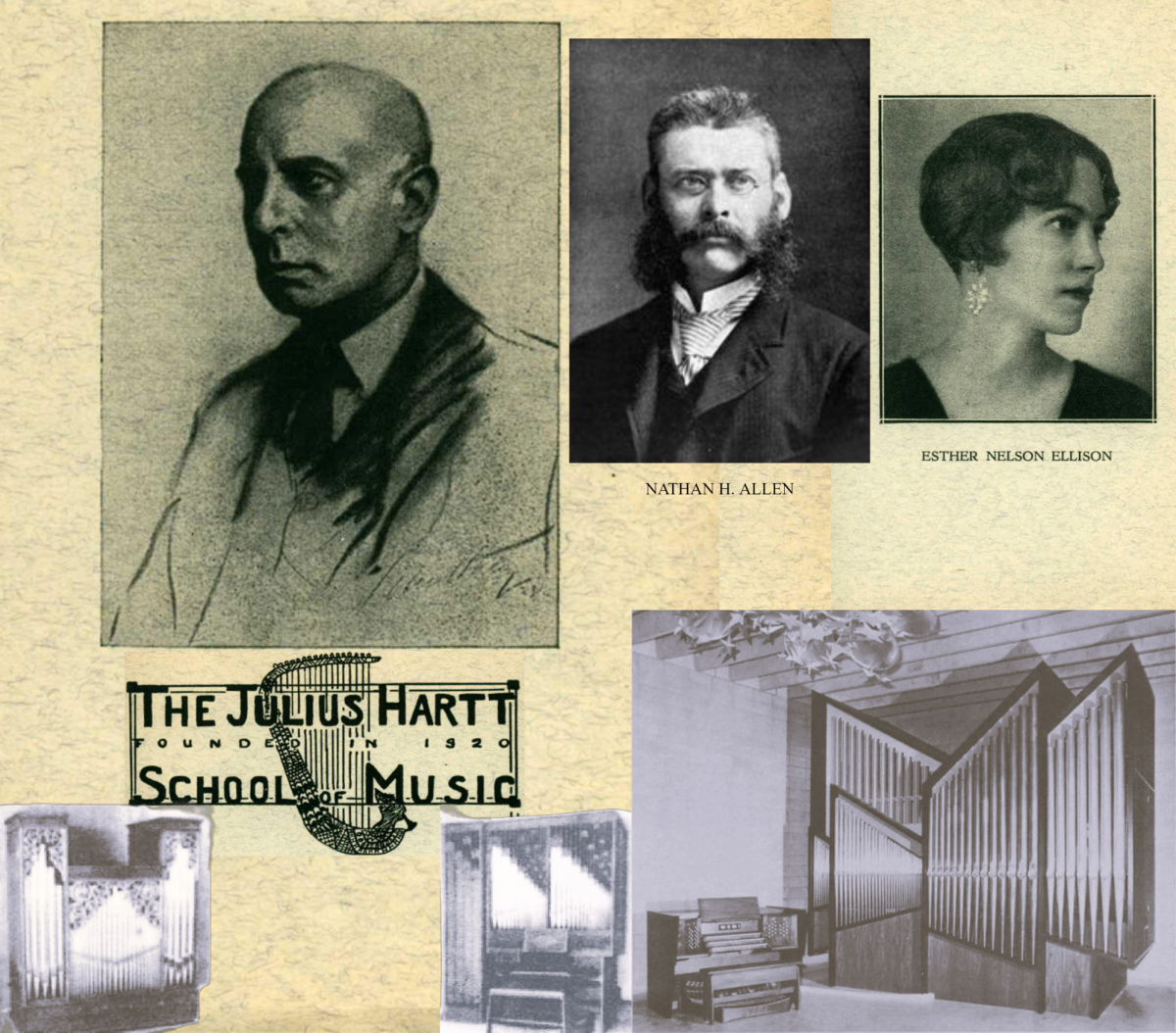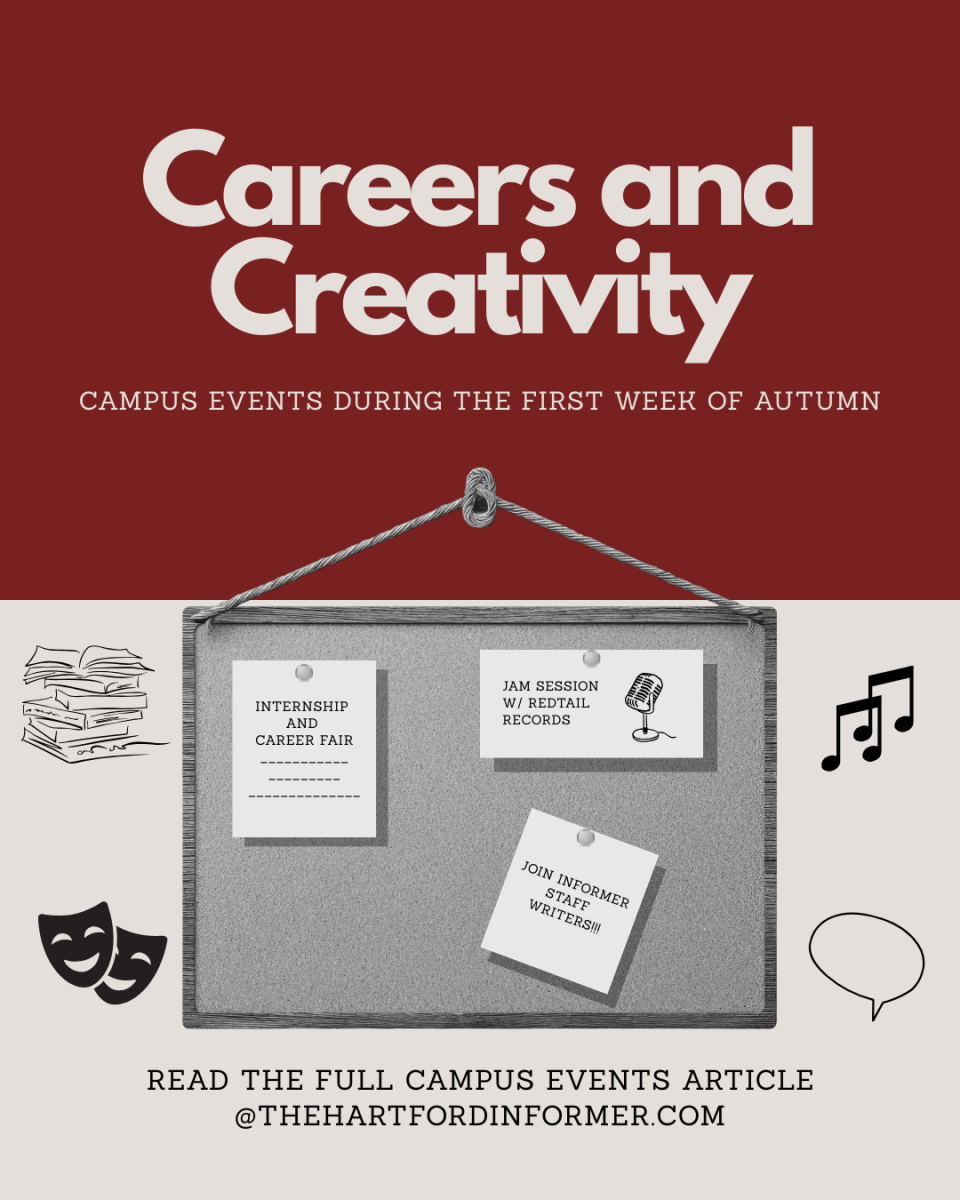It is likely that many of the new professors and students at The Hartt School, are not familiar with the background and legacy of Julius Hartt, the namesake of our music school. Not to mention the four or five organs that formerly graced the corridors of Millard Auditorium and Room 21, as well as Hartt’s contribution to the study of the powerful pipe organ.
To fully understand this legacy, we must first go back to 1913. Hartford, Connecticut, did not yet have a significant organization devoted to music. W.V. Abell, the pianist at the Hartford Conservatory of Music, was the nearest precursor. This was a tiny studio on Asylum Street that offered lessons in voice, piano, violin, and cello in a limited but diversified repertoire. Mr. Julius Hartt was located in Hartford in the same year, having his own studios at 27 Niles Street and in New Haven. Morris Perlmutter, another founder of the Hartt School, whose name is more recognizable to us as Moshe Paranov, shared his piano studio in New Haven with him. Before coming to Hartford, Julius Hartt established himself in Brookline, Massachusetts, and Skowhegan, Maine. Hartt was not only a concert pianist, but also an organist! He was performing in Hartford as early as October 1909, alongside harpist Harriet A. Shaw. From 1909 to 1910, he played the organ at the Asylum Hill Congregational Church. Hartt then promised to support the “organ fund” by staying on as the organist at Asylum Hill for an additional two years without receiving anything. From the “Julius Hartt School of Music” on Collins Street in 1920 to the current building at the University of Hartford, he would strengthen the study of organs into the earliest and latest areas of study. Notable organ faculty and students to come through the Hartt School include Edward H. Broadhead, Ethel Bacon, former organist at the First Church of Christ of Hartford, Nathan H. Allen, former dean of the Hartford Chapter, American Guild of Organists, Esther Nelson-Ellison, former UConn choral director Philip Treggor, eminent organist Ira Albert “Al” Russell, organ professor and former host of ‘The Organ Loft’ WTIC radio show John C. Holtz, music director of the First Church in Farmington, CT, Edward E. Clark and Music Director Emeritus of the Hartford Chorale, Richard Coffey, among many others. Given that the esteemed Austin Organ Co. also called Hartford home, it is safe to conclude that Hartt made the right choice in choosing this city to serve as his musical headquarters. Austin built two organs for The Hartt School or Hartt College of Music. This includes Ira Russell’s 1963 Opus 2419 and Opus 2420 organ debuts in Millard Auditorium. Once located in room 21, the former organ studio, close to the Hartt building’s front entrance, was an odd-looking yet powerful-sounding organ. This organ was built by the Gress-Miles Organ Co., and had four inaugural concerts in late 1970, by students and faculty, and world-renowned organists, including virtuoso Marie Claire-Alain, former assistant to Virgil Fox, Ira Albert Russell, and the 1978 American Guild of Organists ‘International Performer of the Year’, Robert Noehren.
Because of the rise of progressive rock bands and jazz fusion in the 1970s, which made use of the distinctive sounds of the pipe and electric organ, organ study was probably kept alive and well during that time. Not until 2015 did the organ in room 21 lose its appeal at Hartt, and it was unfortunately sold to a church in Babylon, New York. These days, the steel bars in that room’s window that resemble organ pipes serve as the only faint reminder of its past.
While the organ program is no longer active, there has been a resurgence of interest from local organists and faculty. Reviving the organ course for the spring semester of 2022 was made possible by Hartt alumnus Scott Lamlein, who serves as the organist and music director of St. John’s Episcopal Church in West Hartford, CT. Students who took Scott’s first course in the Foundations of Organ Performance course, which was designed for piano/keyboard players, found success. Greg Babal, a keyboard specialist and teacher at The Hartt School, has also talked about the organ as the missing piece. Perhaps someday Hartt will return to its’ roots enshrined by Mr. Julius Hartt, of the “king of instruments.”





